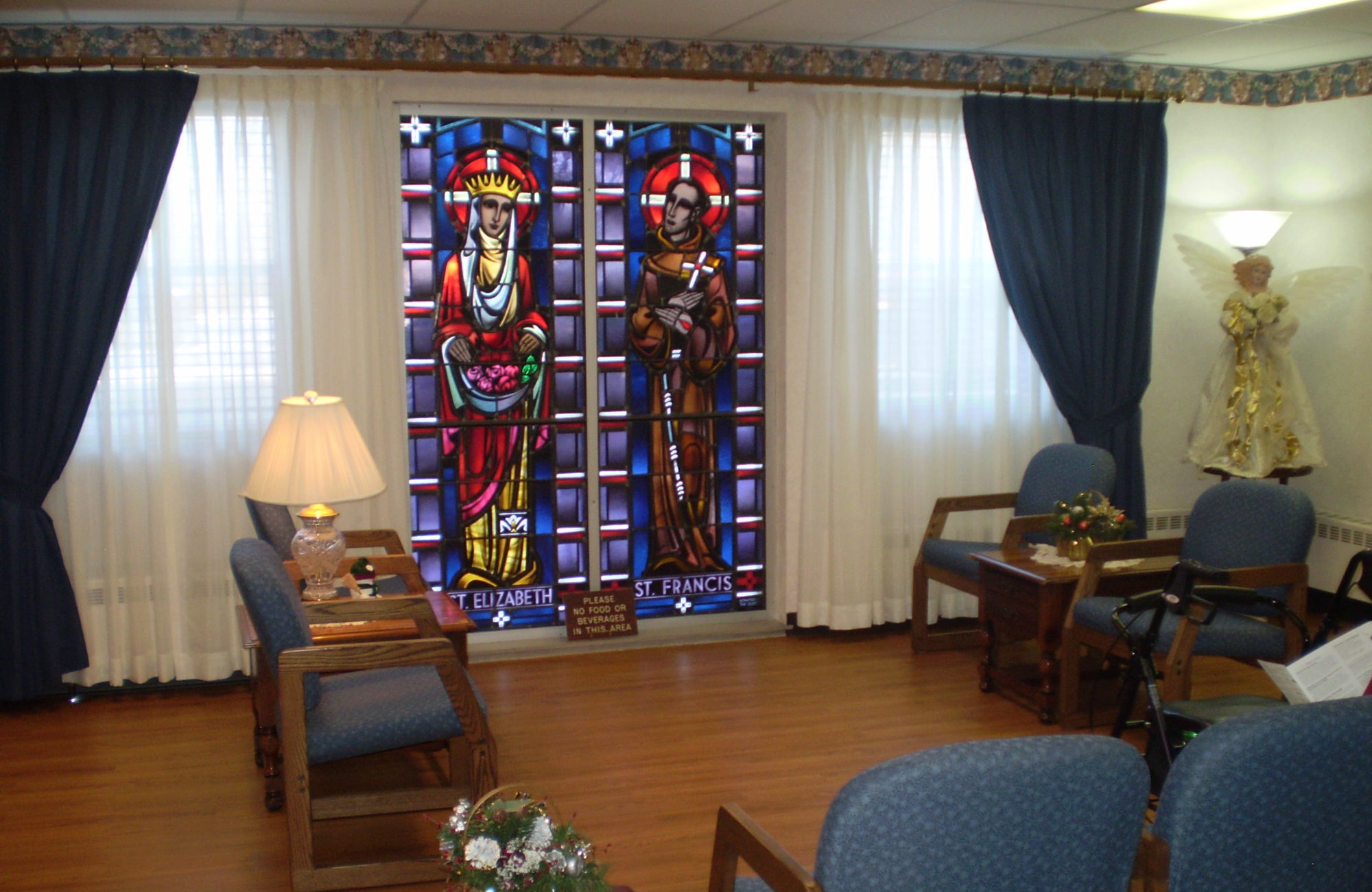 Friday afternoon was a lot of fun here at St. Anne’s! We had our monthly dance with an ‘OktoberFest’ theme, complete with accordion music, dancing, German food, and a Tirolerhüte (Bavarian hat) for each participant to wear. Our activities assistant, Paulla, actually made dirndls (traditional dresses) for herself and Shelly (our activities director) to wear.
Friday afternoon was a lot of fun here at St. Anne’s! We had our monthly dance with an ‘OktoberFest’ theme, complete with accordion music, dancing, German food, and a Tirolerhüte (Bavarian hat) for each participant to wear. Our activities assistant, Paulla, actually made dirndls (traditional dresses) for herself and Shelly (our activities director) to wear.
 When time came for snacks, it was no ordinary fare that was served: residents enjoyed bratwursts and sauerkraut. It seemed that a very good time was had by all, including the band members who played for us. Those who wanted it also could sip on low-alcohol beer during this cultural experience. Although it wasn’t the real German “Oktoberfestbier,” they seemed to really enjoy the treat. The German drinks, whose names even correspond to the occasion, have been served at Oktoberfest since 1818.
When time came for snacks, it was no ordinary fare that was served: residents enjoyed bratwursts and sauerkraut. It seemed that a very good time was had by all, including the band members who played for us. Those who wanted it also could sip on low-alcohol beer during this cultural experience. Although it wasn’t the real German “Oktoberfestbier,” they seemed to really enjoy the treat. The German drinks, whose names even correspond to the occasion, have been served at Oktoberfest since 1818.
Even though it’s not quite the same as a trip to Bavaria, Oktoberfest at St. Anne’s was much more affordable and realistic for our residents than a overseas voyage would be. Actually, I think we were a little late in our celebration; the traditional sixteen-day autumn festival in Munich runs from late September to early October.
Oktoberfest actually has its roots in the royal wedding of Crown Prince Ludwig and Princess Therese of Saxony-Hildburghausen on October 12th, 1810. On that occasion, local citizens were invited to a celebration in the fields in front of the city gate, ending with horse-racing. This celebration was actually held across Bavaria and became an annual event. An agricultural show was added the next year, which continues to modern times (held every three years).
This year, the people of Munich celebrated the 183rd OktoberFest, which is still held in the field named in honor of Princess Therese.
Resources: http://www.muenchen.de/int/en/events/oktoberfest/history.html and http://www.germanclubsandiego.org/oktoberfest-what

